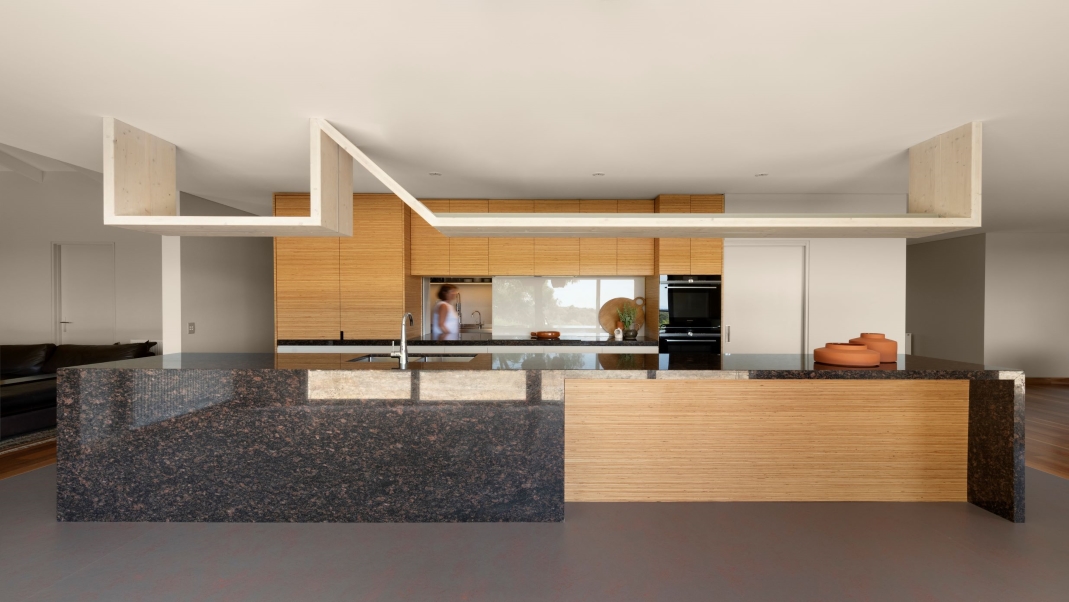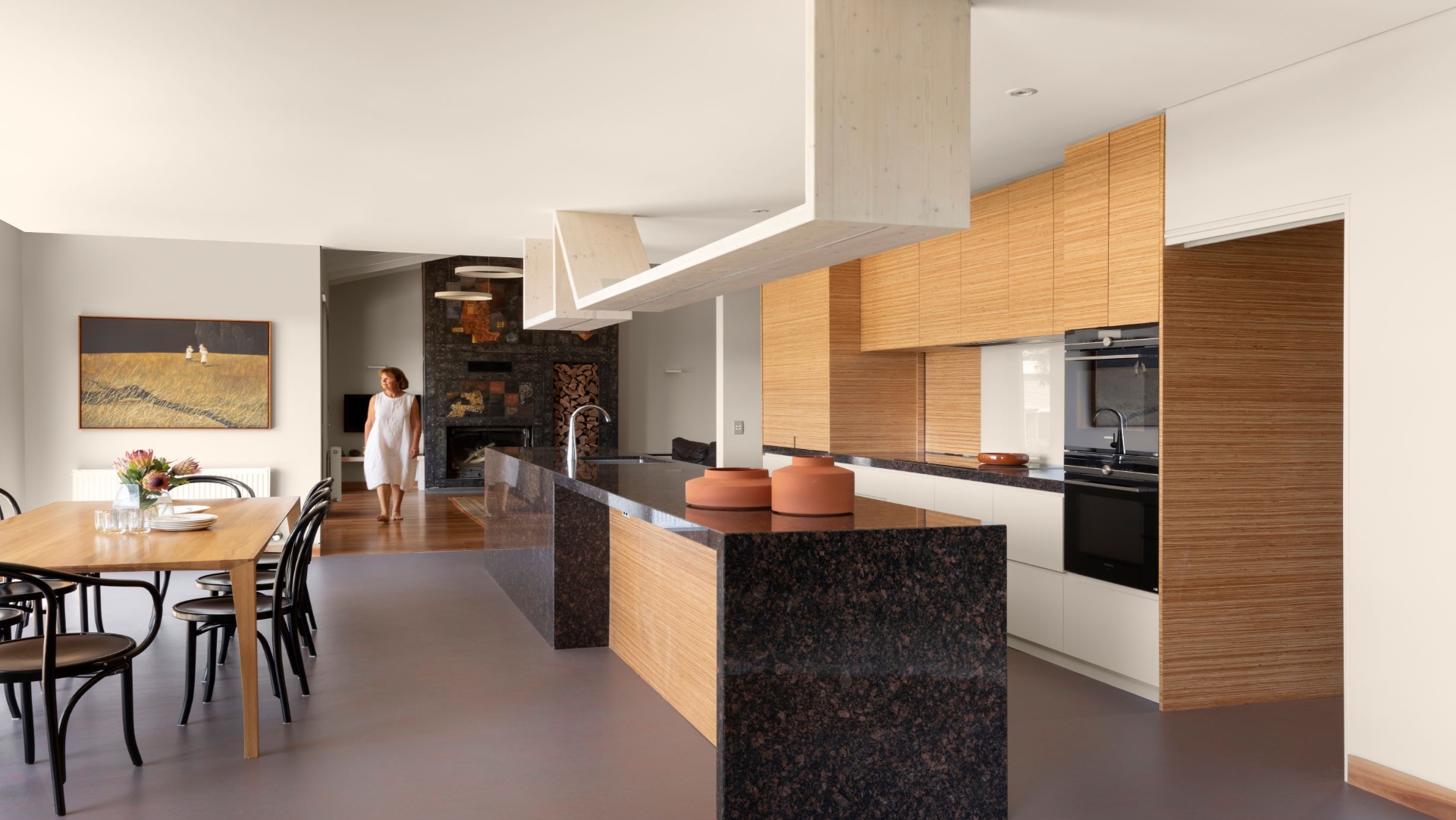10—02—2021
Everything You Need To Know About Ply For Doors
For every interior you are designing, getting the materials right for each design element is critical for a high quality finish.
Our range of plywood panels offer a durable and attractive option for walls, ceilings and joinery – but we are often asked if they are a suitable choice for doors too.
The answer is, we don’t recommend ply for doors; but there is a way to achieve the same aesthetics in certain situations. However, it’s important to choose the right product and to store, cut and seal it in the right way.
So if you’re considering using plywood for doors on your next project, read on to learn the essential things you need to know.
Which ply should you choose for doors?
If you are considering using plywood for doors, it’s important to remember that, as an engineered product manufactured from natural timber, plywood behaves differently to man-made products. What we mean by this is that environmental factors such as moisture and temperature will affect the panel, in particular, how flat it remains.
Clearly any changes in shape will cause issues in closing doors, which is not ideal. To avoid this, we recommend a timber veneer pressed onto MDF for use on doors. This creates a stable material that is highly suited for use in cabinetry. To further improve the durability and look, you will also need to edge-band the doors. If you (or your specifier or designer) have questions on the best way to do this, please get in touch with our team for expert advice.
Store, cut and seal it right
Another key element to success with ply in doors lies in the way you store it when delivered. This is critically important. Your plywood panels must always be stored flat, never on their side or ends. Choose a place that’s undercover and out of direct sunlight and be sure to include full-width timber bearers, a maximum 1000mm apart. That means for a standard 2400 x 1200mm sheet, you’ll need three timber bearers, with cover sheets top and bottom. You should also make sure the panels are stored away from any source of moisture or temperature changes. In addition, we also recommend that your ply is left for 48 hours in the environment before it is machined or cut.
Speaking of cutting, our warranty does not cover the replacement of our sheets once they have been cut. So make sure the cabinet maker or joinery shop you choose are experienced in working with plywood in doors. Once cut, be sure to seal all exposed faces and edges to ensure your ply stays true and looks good for longer. Talk to our team if you need advice on the best oil or lacquer for the job.
For more information regarding the specifics; read our blog ‘Plywood Doors ‘What’s the Real Story?’
Success story: Veneer in action
One of the biggest reasons you are likely considering plywood for your doors is the aesthetically pleasing finish, and proof of this can be seen in our completed Princes Hill House project. Blackbutt Veneer was used to great effect in the living room, kitchen and bathroom cabinetry, to create a stylish, modern and cohesive finish throughout the home.
For the best results, talk to the experts
With the key steps involved in using plywood effectively in doors, it’s important to work with experts, or get expert advice. At Maxiply, we are always happy to jump on the phone to discuss your project and recommend products that best match your needs.
Contact our friendly team today on 1300 761 741 to discuss your project!


10—02—2021
For every interior you are designing, getting the materials right for each design element is critical for a high quality finish.
Our range of plywood panels offer a durable and attractive option for walls, ceilings and joinery – but we are often asked if they are a suitable choice for doors too.
The answer is, we don’t recommend ply for doors; but there is a way to achieve the same aesthetics in certain situations. However, it’s important to choose the right product and to store, cut and seal it in the right way.
So if you’re considering using plywood for doors on your next project, read on to learn the essential things you need to know.
Which ply should you choose for doors?
If you are considering using plywood for doors, it’s important to remember that, as an engineered product manufactured from natural timber, plywood behaves differently to man-made products. What we mean by this is that environmental factors such as moisture and temperature will affect the panel, in particular, how flat it remains.
Clearly any changes in shape will cause issues in closing doors, which is not ideal. To avoid this, we recommend a timber veneer pressed onto MDF for use on doors. This creates a stable material that is highly suited for use in cabinetry. To further improve the durability and look, you will also need to edge-band the doors. If you (or your specifier or designer) have questions on the best way to do this, please get in touch with our team for expert advice.
Store, cut and seal it right
Another key element to success with ply in doors lies in the way you store it when delivered. This is critically important. Your plywood panels must always be stored flat, never on their side or ends. Choose a place that’s undercover and out of direct sunlight and be sure to include full-width timber bearers, a maximum 1000mm apart. That means for a standard 2400 x 1200mm sheet, you’ll need three timber bearers, with cover sheets top and bottom. You should also make sure the panels are stored away from any source of moisture or temperature changes. In addition, we also recommend that your ply is left for 48 hours in the environment before it is machined or cut.
Speaking of cutting, our warranty does not cover the replacement of our sheets once they have been cut. So make sure the cabinet maker or joinery shop you choose are experienced in working with plywood in doors. Once cut, be sure to seal all exposed faces and edges to ensure your ply stays true and looks good for longer. Talk to our team if you need advice on the best oil or lacquer for the job.
For more information regarding the specifics; read our blog ‘Plywood Doors ‘What’s the Real Story?’
Success story: Veneer in action
One of the biggest reasons you are likely considering plywood for your doors is the aesthetically pleasing finish, and proof of this can be seen in our completed Princes Hill House project. Blackbutt Veneer was used to great effect in the living room, kitchen and bathroom cabinetry, to create a stylish, modern and cohesive finish throughout the home.
For the best results, talk to the experts
With the key steps involved in using plywood effectively in doors, it’s important to work with experts, or get expert advice. At Maxiply, we are always happy to jump on the phone to discuss your project and recommend products that best match your needs.
Contact our friendly team today on 1300 761 741 to discuss your project!






